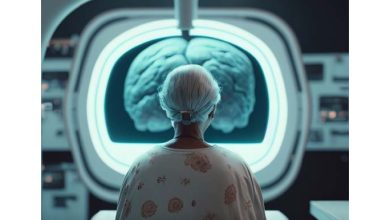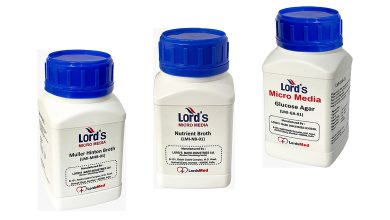Is Covid-19 Fueling Dialysis Market Boom
Renal dialysis equipment market is expected to reach $225 million by 2025 in India

During the current Covid-19 pandemic some patients are presenting with severe organ damage. Complications of the kidney are proving fatal for a number of patients. According to a prospective cohort study, five per cent of the patients admitted with covid-19 in Italy got acute kidney injury. These patients require additional support from both dialysis service providers and dialysis equipment manufacturers.
“The need for dialysis machines is more essential than ever. The anticipated increasing number of COVID-19 patients requiring dialysis treatment will inevitably boost the market. The pandemic has raised the threat of equipment shortage and supply chain deficiencies. Other hospital resources are likely to reach capacity in the coming weeks. However, the conservation of vital lifesaving equipment such as dialysis machines must be prioritized,” said Aliyah Farouk, Medical Devices Analyst at data and analytics company, GlobalData.
Indian Kidney Care Market
Kidneys are vital organs and the body’s natural filtration system. When this vital organ function is affected, there is no way to reverse the damage. The most common causes of kidney diseases in India are obesity, hypertension and diabetes. Over the last decade, with increasing life expectancy and lifestyle diseases, there has been a rise in chronic kidney disease and end stage renal disease (ESRD).
Although kidney transplantation is the choice of treatment but due to limited availability of donor organs and long waiting list, patients suffering from end stage renal diseases tide through with dialysis. A dialysis machine is an artificial kidney that removes the waste products and excess fluids from the body, while maintaining proper chemical balance of the blood. This is also called renal replacement therapy. There are two types of dialysis hemodialysis and peritoneal dialysis.
During hemodialysis a machine filters waste from blood and returns purified blood to the body. In peritoneal dialysis, the waste material is exchanged through the abdominal cavity with a dialysis solution that absorbs waste and excess fluids.
Increasing Demand
According to experts about 10-15 per, cent of India’s population suffer from kidney diseases and ailments. As of 2016, there were about 13 lakh patients in India requiring some form of renal replacement therapy, with about two lakh new patients being added to this pool every year. Clearly, the demand for dialysis is increasing in India, however there is a huge demand supply gap. With approximately only 4950 dialysis centres in the government center and a handful of centers in the private sector, the demand is less than half met.
Market Dynamics
The dialysis market is segregated into equipment, consumables and services. Dialysis service market is divided into two types, hemodialysis and peritoneal dialysis. Hemodialysis holds 90 per cent of the market and it is the most accepted modality for dialysis, the remaining 10 per cent is peritoneal and other dialysis modalities.
As per reports, the renal dialysis equipment market is expected to reach $225 million by 2025 in India. In fact, more than 85 per cent of the Indian renal equipment market is made up of dialysis accessories and dialysis machines. The equipment sector is further categorised into three segments: budget machines (non upgradable) for chronic/maintenance hemodialysis, premium machines (upgradable) maintenance dialysis and other therapies like Online Haemodial filtration’ etc and Continuous Renal Replacement Therapies (CRRT) machines (high end), which is mainly used in ICU settings to treat sensitive and acute cases ( eg. multi organ failure etc).
Dialysis centers
There are many types of dialysis centers catering to the needs of people and aligned to different business models. These are in-centre dialysis, hospitals centers, independent dialysis centres, home dialysis, PD and home haemodialysis. Setting up dialysis centers is difficult because of the huge cost. The fixed cost for these dialysis centre range between INR 80 lakh to 1 crores, with their capital cost ranging from 7-11 lakh per bed. Dialysis equipment make-up 80 per cent of the capital cost.
Major Players
Globaly, there are a number of companies catering to the dialysis market. Some of these are Fresenius Medical Care (Germany), DaVita Healthcare Partners (US), Baxter International, (US), and B. Braun Melsungen AG (Germany). These companies currently hold major share of the markets globally and dominating the market. Other players in this market include Ion Nipro Corporation (Japan), Cantel Medical Corporation (US), NIKKISO CO., (Japan), Diaverum Healthcare Partners (Germany), Asahi Kasei Corporation (Japan), Medtronic (Ireland), Rockwell Medical (US), Becton, Dickinson and Company (US), Dialife Group (Switzerland), and Isopure (US), among others.
These companies together account for more than 85 percent of the renal dialysis equipment market in India, rest is Indian manufacturers. Renalyx Health Systems is an Indian company specialising in comprehensive renal care, and dialysis treatment and is slowly gaining grounds among the MNC heavyweights.
The major service providers in India are Apex kidney care, NephroPlus and Sandor Nephro Services. The dialysis service provider market is also growing at a healthy rate. This has attracted big investors who are keen to take dialysis service to the masses. Recently, NeohroPlus received $45 million funding from global alternative asset manager Investcorp for expansion in India and overseas.
New Trends
With the advent of newer technologies dialysis techniques in the country is witnessing a lot of innovation. These innovations are being bought by the leading companies in the field like Fresenius Medical Care, Baxter and others. However, domestic manufacturers are also partnering with academic hotbeds like IITs to come up with newer dialysis technologies.
Last year, Fresenius Medical care launched a new dialysis machine, 4008A, which is said to improve accessibility to dialysis treatment for patients who are living with ESRD. In addition, Baxter is expected to strengthen its market position by providing peritoneal dialysis across India.
Indian dialysis providers have also been increasing their centres across India. Due to the current Covid-19 scenario, a number of mobile dialysis units have been launched across the metro cities. Going forward, home hemodialysis is also going to increase in India.
Clearly dialysis is a very attractive sub-segment in the healthcare delivery sector showing promising margins of growth and opportunity.
Challenges
Major factors affecting the growth of dialysis market in India is affordability. Since most of the equipment and disposables used for dialysis are imported the cost of per dialysis session is also high. The cost of a dialysis session at a government hospital varies between Rs 200-700 per session, the same in private sector ranges between Rs1000-2500 per session.
Average monthly cost of Hemodialysis is anywhere between Rs12,000-Rs18,000 per month and that of Peritoneal Dialysis is between 18,000-20,000 per month. Inadequate insurance coverage further worsens the situation. Due to accessibility and affordability constraints about 70% of patients who start dialysis give up mid-way.
Another challenge is trained manpower. According to some estimates, there are only 1300 nephrologist in India, making it even more difficult for hospitals to provide these services. Besides, there are not many centres providing dialysis in India. As per Pradhan Mantri National Dialysis Programme every year about 2.2 lakh new patients of ESRD get added in India resulting in additional demand for 3.4 crore dialysis centers every year. With only 4950 dialysis centres, the demand is less than half met with the existing infrastructure.
Future
The new upcoming technologies like artificial intelligence, machine learning and robotics provide great opportunities for dialysis therapy. Research in the field of regenerative medicine and tissue engineering to provide alternative cell-based approaches for the treatment of renal failure is also advancing. Another areas of interest is wearable artificial kidneys and implantable artificial kidneys. Recently, there has been growth and extensive research in this area. Personalised dialysis treatment is also gaining a lot of attention. In future, all renal replacement therapy is expected to evolve to match with the clinical needs of each patient and hence providing an improved quality of life.
The demand for dialysis is going to increase in future and providers with cost effective and scalable solutions will gain grounds.




